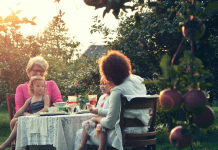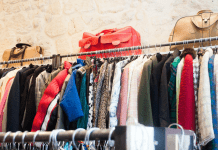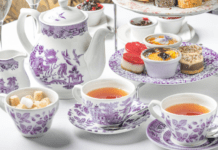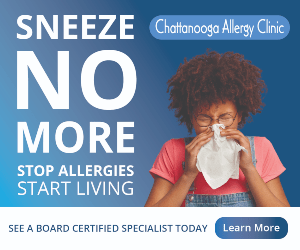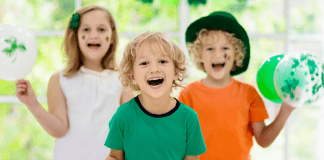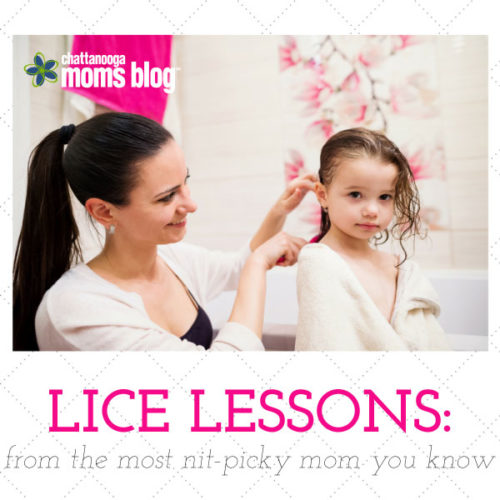
Allow me to introduce myself. I’m Katie and I am the most nit-picky mom you know! I really don’t want to be writing this post. I had several other “look-at-me-I’m-a-good-mom” topics in mind. But I want to use my own experiences to help other moms, so this, unfortunately, is the topic that I need to write about. If you see me around town in the next few days and it looks like I have been attacked by the killer bunny in Monty Python, it is just because I cannot write this post without frantically clawing myself.
I have three daughters (ages six, four, and one) and when my oldest was two, we dealt with our first case of head lice. I never had lice as a kid, so I had absolutely no clue what to do. I felt embarrassed, confused and helpless, and the conflicting information I received from the internet, doctors/pharmacists and well-meaning friends only increased these feelings. It took us several failed attempts at ridding ourselves of the dreaded insects before we finally figured out what works and what doesn’t. So I want to share what we have learned, in case you ever find yourself scratching your head (funny, not funny) over what to do for a child with head lice. I actually think my knowledge base is too broad, and I probably need to do a three-part series. I’ll spare you, though.
If you have a child with head lice, here is what you SHOULDN’T do:
You SHOULDN’T beat yourself up. You are not a bad mom and you didn’t do anything wrong. The stigma about lice simply isn’t true. You cannot line up a group of kids and pick out which ones have lice based on cleanliness, socioeconomic status, race or any other measure.
You SHOULDN’T treat with OTC medicines. Continued exposure to the chemicals in these products over many years has caused lice (like antibiotic-resistant bacteria) to develop genetic mutations that render these drugs useless. There are some more effective prescription medicines available, but there are some risks and benefits to consider with those as well, such as the high cost and the toxicity level. I’ll write more about this later, but even the prescription medicines only kill the live bugs and not the eggs (nits). The only way to get rid of the eggs is to literally pull each and every one off of the hair. I never knew the origin of the term nit-picking before I went through this tedious process!
If you have a child with head lice, here is what you SHOULD do:
You SHOULD inform the staff at any child-centric places your child has recently been, such as school, church, gymnastics/dance class, etc. Also call or text any parents whose children have recently had playdates with your child. This can help greatly in stopping the spread of lice, because parents usually don’t check their children for lice unless they have reason to do so. And because the main symptom of lice (scratching) may never present or does so late in the bug’s life-cycle, your child could have innocently been exposing other kids for almost two weeks before you know. It doesn’t matter who had it first (your kid got it from another person, too!), it is important to keep it from spreading. Don’t be embarrassed! I have found that most parents have already been through it, and you will find compassion and support rather than judgment.
You SHOULD nit-pick. This may be the most paramount thing I learned (the hard way!). If you are relying solely on medicinal treatment to kill the live bugs, there is no good way to predict when the nits will hatch and need re-treatment. Female lice lay eggs between Day 19 and 35 of their life cycle and those eggs hatch within 6-7 days of being laid. Re-treatment to kill newly hatched live lice depends on which day the egg was laid, so it is best to remove as many eggs as you can by nit-picking so you aren’t in a constant cycle of re-treating. Many cities have fancy boutique salons specifically for this process with cute names and fancy amenities. Unfortunately, Chattanooga is not one of them. My husband and I agree we would have paid the premium for this service to save our sanity! If anyone wants to open one here, I will totally be a silent partner with you! For handling it like a pro on your own, I recommend nit-picking every two days after the initial treatment and then on Days 1 and 3 after the second treatment. You should take your child outside (broad daylight is best) and pick up small sections of hair to inspect for nits, which are always attached (they won’t move if you touch them like dry scalp flakes) to the hair very close to the scalp. Pay special attention to the hair at the nape of the neck and behind the ears. Wear gloves so the bugs can’t get under your fingernails, and when you find a nit, separate and pluck that piece of hair (you may wind up pulling more than just that one strand! Sorry, poor kid! OUCH!) and place it in a resealable plastic bag or in a bowl of water.
You SHOULD let your kid have treats (suckers, because they last so long!) and watch movies on the phone or tablet while doing the painfully-long process of nit-picking. I also recommend playing Taylor Swift’s “Bad Blood” and changing the words to “Cause baby now we got Bad Bugs! Hey!”
You SHOULD wash and vacuum and you should put items (like stuffed animals) that cannot be laundered in sealed plastic bags for two weeks. Lice and eggs are killed by exposure to temperatures greater than 130ºF for more than five minutes. Vacuuming furniture and floors can remove an infested person’s hairs that might have viable nits attached. Honestly, these are supplemental measures and are not required to eliminate a head lice infestation, but I do them for peace of mind. My house is covered in carpet, my kids look like E.T. hiding among a closet-full of stuffed animals every day, and they also love to do head stands on the couches. Urgh. Bleeaaak. Bluuurg.
Per the CDC: “The risk of getting infested by a louse that has fallen onto a rug or carpet or furniture is very small. Head lice survive less than 1–2 days if they fall off a person and cannot feed; nits cannot hatch and usually die within a week if they are not kept at the same temperature as that found close to the human scalp. Spending much time and money on housecleaning activities is not necessary to avoid reinfestation by lice or nits that may have fallen off the head or crawled onto furniture or clothing.”
If you don’t have a child with head lice, but want to prevent getting it as best as possible:
You SHOULD keep longer hair UP. Braids or buns are best.
You SHOULD talk to your children about lice-prevention. A friend of mine has a great saying, “No hugs, no bugs.” I also try to remind my children not to share brushes, bows, hats, coats, scarfs, etc. My poor kids…I totally freaked on them at a Tea Room in Knoxville when they started to put on the fancy (communal) hats and scarves. Something that would have never concerned me until post-lice.
You SHOULD spray your child’s hair with an essential oil blend to repel lice. We have had no problems with lice when I am diligent about spraying their hair before they leave the house for anything. I use 16 oz. spray bottle filled with purified water and 20 drops each of tea tree, peppermint and lavender essential oils. I recommend using a brand that has high standards of quality control to make sure you are getting pure, safe and effective essential oils.
Friends, I hope you never have to deal with lice. But if that day comes, I hope you find this information helpful.


